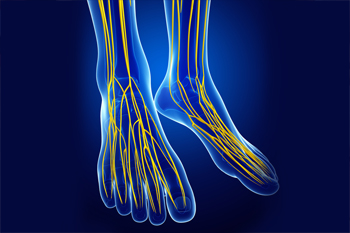159 North 3rd Street
Macclenny, Florida 32063
 Patients who have consistent foot pain are aware of the discomfort it may cause in daily life. The foot condition that is referred to as tarsal tunnel syndrome can cause severe pain and discomfort, and is caused by nerve damage. The tarsal tunnel is found inside the ankle, and the nerve that lies in this area may become damaged from repetitive motions, bone spurs, or flat feet. When specific stretches are frequently performed, mild relief may be found. If you have ankle pain, it is suggested that you schedule a consultation with a podiatrist who can properly diagnose and treat tarsal tunnel syndrome.
Patients who have consistent foot pain are aware of the discomfort it may cause in daily life. The foot condition that is referred to as tarsal tunnel syndrome can cause severe pain and discomfort, and is caused by nerve damage. The tarsal tunnel is found inside the ankle, and the nerve that lies in this area may become damaged from repetitive motions, bone spurs, or flat feet. When specific stretches are frequently performed, mild relief may be found. If you have ankle pain, it is suggested that you schedule a consultation with a podiatrist who can properly diagnose and treat tarsal tunnel syndrome.
Tarsal tunnel syndrome can be very uncomfortable to live with. If you are experiencing tarsal tunnel syndrome, contact Dr. John L. Coleman of Florida. Our doctor can provide the care you need to keep you pain-free and on your feet.
Tarsal Tunnel Syndrome
Tarsal tunnel syndrome, which can also be called tibial nerve dysfunction, is an uncommon condition of misfiring peripheral nerves in the foot. The tibial nerve is the peripheral nerve in the leg responsible for sensation and movement of the foot and calf muscles. In tarsal tunnel syndrome, the tibial nerve is damaged, causing problems with movement and feeling in the foot of the affected leg.
Common Cause of Tarsal Tunnel Syndrome
The Effects of Tarsal Tunnel Syndrome
A physical exam of the leg can help identify the presence of tarsal tunnel syndrome. Medical tests, such as a nerve biopsy, are also used to diagnose the condition. Patients may receive physical therapy and prescriptive medication. In extreme cases, some may require surgery.
If you have any questions please feel free to contact our office located in Macclenny, FL . We offer the newest diagnostic and treatment technologies for all your foot and ankle needs.